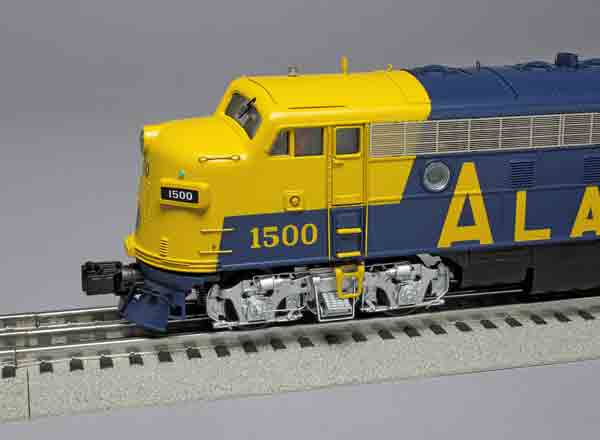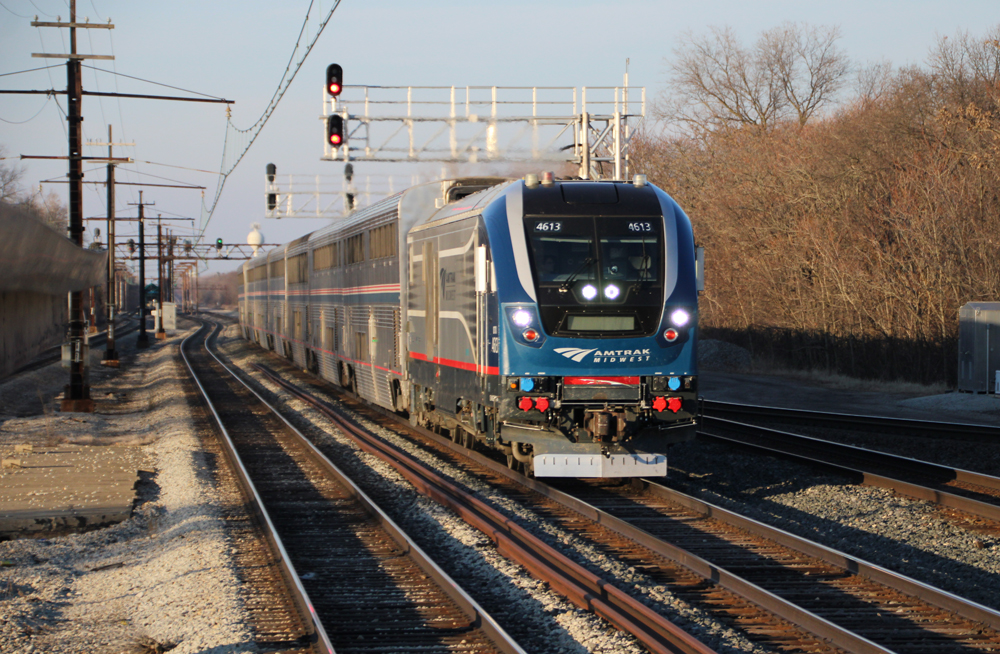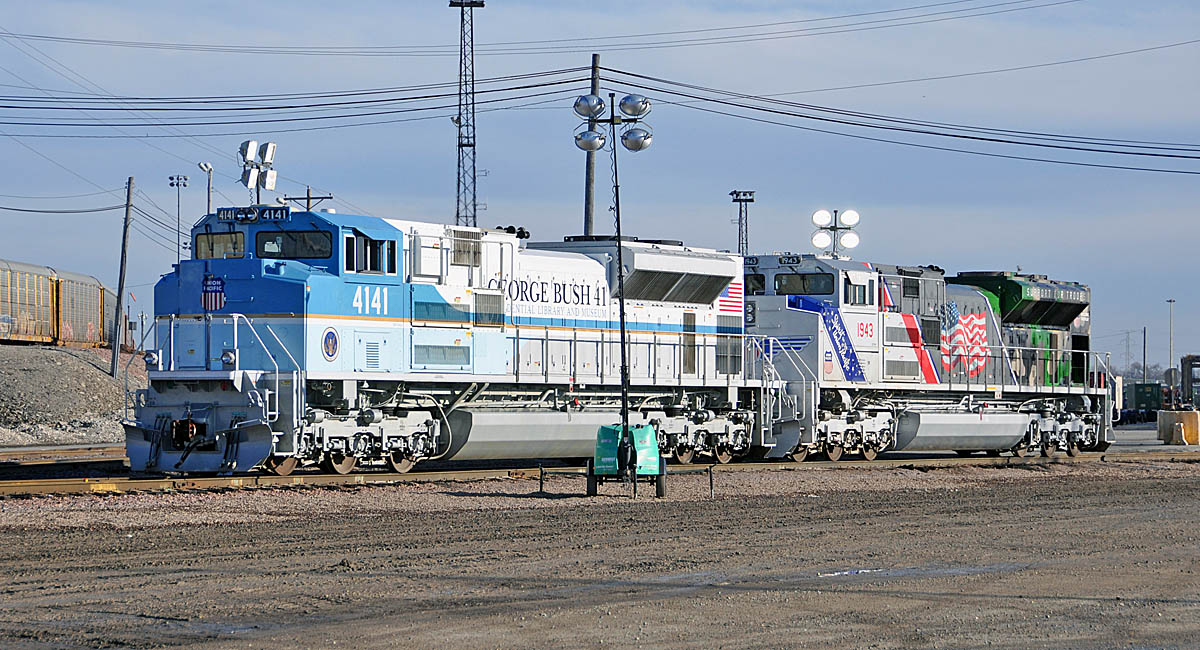Price: $729.95 (no. 20-20391-1)
Features: O-31 operation, two powered A units with two can-style motors per unit; a coil coupler on each A unit, ProtoSound 3.0 command and sound system)
Current run road names: Alaska RR, Northern Pacific; Richmond, Fredericksburg & Potomac; and Southern Pacific
Sad, but this is the nature of continually advancing technology. As O gaugers, however, a cab unit – be it a PA, FA, C-Liner, or F7 – lives on and works hard every single day of the week.
Today we examine the venerable F7 diesel in an A-B-A Premier line set from MTH Electric Trains. The Electro-Motive Division of General Motors produced the F7 from 1940 to 1953, assembling more than 3,900 A and B units for approximately 20 original owners. That total included nine A and B units ordered by the Alaska RR.
Opening the box
The MTH Premier line no. 20-20391-1 set hosts two powered A units (each with two can-style motors and smoke units), directional lighting, and cab interiors. There is also an unpowered B unit.
Whenever I see the Alaska RR paint scheme I think, with a smile on my face mind you, “People will still see you in a blizzard!” Oh, and you’ll know you haven’t accidentally stepped over the border into the Yukon. Seriously, though, the paint scheme is absolutely superb for showing off the set’s detailing.
The yellow on the cabs accentuates vent detail and something like 16 add-on grab irons on the front, nose sides, cab doors, and even four above the cab windows. The snout has a headlight, illuminated number boards, and classification lights. On top of the cab you’ll find a strobe that flashes yellow and what appears to be a radio antenna.
The body is generally smooth; the only major interruptions are the rivet heads in the steel structural supports and spots, such as the doorframes and doorway kickplates. The cab doors open with a push and close when you release finger pressure.
The blue body is light enough to show off vent detailing and the rivets and seams that flow in from the yellow areas. The rivets actually seemed to reflect more brightly than the yellow-painted rivets.
The top of the unit has five fans and two exhaust stacks. You’ll also find lift rings and an add-on horn near the middle of the roof.
The sides have two portholes, and grab irons are located at the rear access doors (these also push open). The silver metal screens running from behind the cab to the rear add a stylish element that would have been lost if they had simply been painted the blue of the carbody.
The locomotive trucks are die-cast metal and have rivet, brake, and brake-line detailing. The fuel tank (speaker housing) is painted black.
Both cab units have die-cast metal pilots with add-on uncoupler arms and, of course, coil couplers on the nose. The rear, where the units face each other, is standard with pre-installed diaphragms. A tether connects the powered and unpowered units. The easiest way for me to mate them was to set a soft towel down at trackside and tilt the A-B-A on its side. The connections were easier to see; once I had connected the tethers I turned the set upright and made the coupler connection.
The MTH F7 is a tried-and-true design that looks good. Just like the real thing, this O gauge diesel is an excellent rolling billboard for whatever road name is painted on the flanks.
On the test track
When coupled and ready to roll, this outfit is an impressive sight.
When you start up the A-B-A and move forward, “forward” is in the direction of diesel no. 1500. The unit has green classification lights. The trailing A unit, no. 1508, has red markers. Both units’ markers remain the same color, regardless of their direction of travel. The headlights do, however, come on or go off, depending on the direction of the train.
The prime mover sounds are very good, authentic tones with good reproduction. There is also the usual assortment of recorded comments from the crew.
Smoke output from both cab units was considerable, and after a functional check I toggled the smoke units off.
The conventional low-speed average was 2.9 scale miles per hour, and our command-mode low speed was 1.6 scale miles per hour. Our high-speed average was 64.5 scale miles per hour. That’s where I cut it off, fearing the diesels would go off the table.
Drawbar pull was 2 pounds, 2 ounces.
Should you search the cab units (as I did) for a clever rooftop hatch hiding all the manual controls – surprise! – they’re concealed by the end-of-unit diaphragms. The hatch folds down like a drawbridge. This is a nifty spot to place them.
The MTH Premier line F7 set is a nicely decked out model of a locomotive that should be standard equipment on any O gauge railroad re-creating the period 1944-74 (give or take a few years). It was pleasant to operate, delivered good performance, and has a solid sound system that will let your mind drift back a few decades.














